Module 5 Intro
1. Module 5 Intro
1.10. Page 2
Module 5—Photosynthesis and Cellular Respiration
 Explore
Explore
 Read
Read
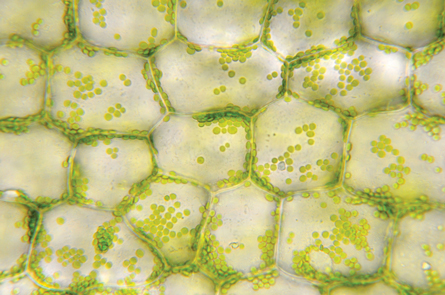
© Nancy Nehring/iStockphoto
Where does photosynthesis occur?
In Lesson 1 you studied the chloroplast and learned to identify its structures and functions. As you begin to explore the light-dependent reactions of photosynthesis, you will be focusing on the reactions that happen in the thylakoid membrane.
thylakoid membrane: flattened stacks within the stroma that contain chlorophyll
Chlorophyll is the light-capturing pigment that absorbs all wavelengths of light except for green and some yellow. Read “The Light-Dependent Reactions of Photosynthesis” on page 170 of the textbook. Make note of the graphs and diagrams on page 171. You may also want to revisit the Module 1: Lesson 1 Assignment, where you completed a virtual experiment discussing factors that affect photosynthesis. One factor discussed was light wavelengths.
A Closer Look at Chloroplasts

The flattened thylakoids in the chloroplasts of plant cells are stacked into columns called grana. Surrounding the thylakoids and filling the interior of the chloroplast is the fluid stroma, which is where the chemical reactions that synthesize carbohydrates take place.
Light-reflecting and Light-absorbing Characteristics of Pigments
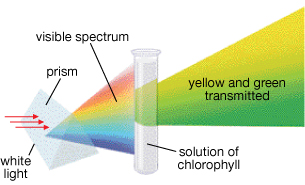
When you look at an object, you see the colours that were not absorbed by the object.
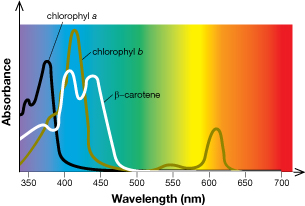
This absorbance spectrum for three photosynthetic pigments shows that each pigment absorbs a different combination of colours of light.
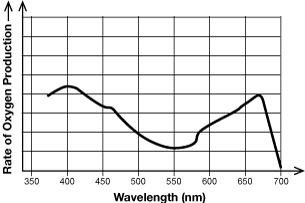
This action spectrum for photosynthesis shows the rate at which oxygen is produced during photosynthesis. Notice that the shape of the graph line generally mirrors the shape of the graph lines in the absorbance spectra above.
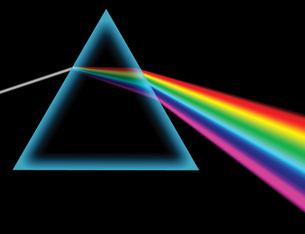
© YAKOBCHUK VASYL/shutterstock
 Self-Check
Self-Check
SC 1. Why do plants appear green?
SC 2. What is the difference between chlorophyll a, chlorophyll b, and beta carotene?
SC 3. Why would it be an advantage for a plant to have several pigments in a chloroplast?
SC 4. At what wavelength of light is oxygen production the lowest? Highest?
 Self-Check Answers
Self-Check Answers
SC 1. Plants appear green because chlorophyll reflects the wavelength of light that produces green light and absorbs the other wavelengths.
SC 2. Chlorophyll a absorbs more indigo, violet, and red wavelengths. Chlorophyll b absorbs more blue and orange wavelengths. Beta carotene absorbs violet, indigo, blue, and green wavelengths, but not yellow, orange, or red wavelengths.
SC 3. Having a variety of pigments enables a plant to use a greater percentage of the Sun’s light.
SC 4. Oxygen production is the lowest between 500 and 550 nm (green-light wavelength). Oxygen production is highest between 400 and 475 nm (indigo/blue-light wavelengths).